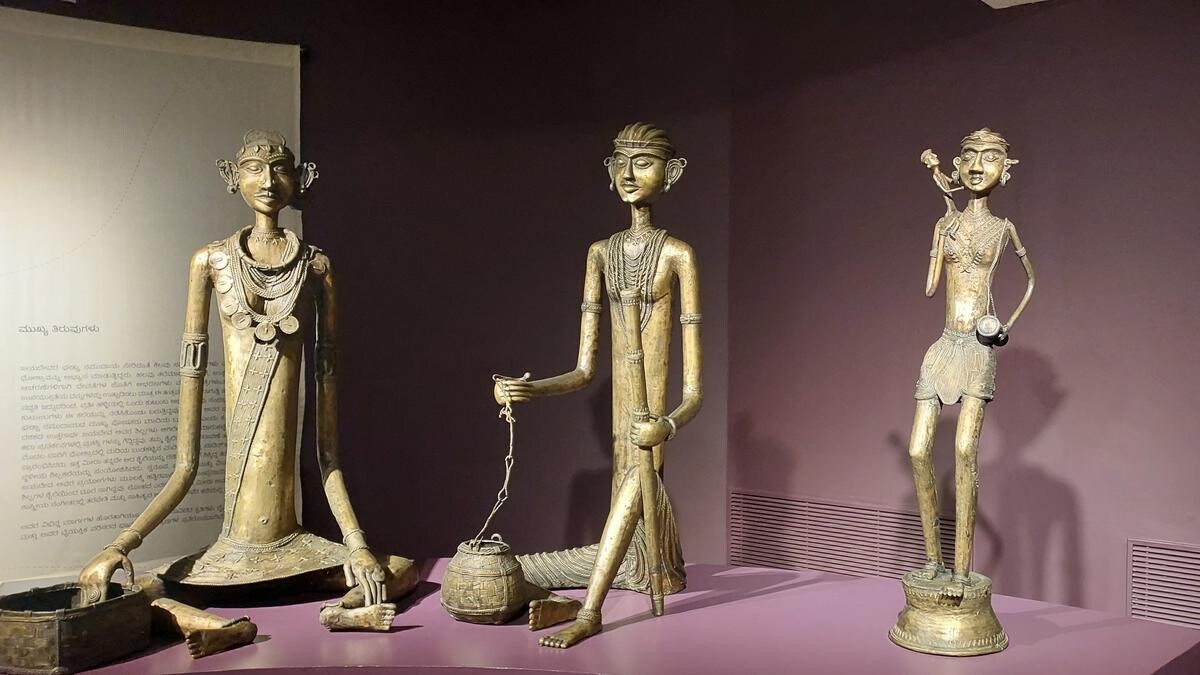
It was an ordinary day outside the Museum of Art & Photography (MAP) in Bengaluru, when overheard conversations among a group of students captured the essence of a common perception. They spoke of dhokra pieces, the intricate brasswork art forms originating from Bastar and Raigarh in Chhatisgarh, as mere decorative objects in their homes. Much like these students, many have admired these artworks as ornamental without fully understanding their cultural and artistic significance. This viewpoint shifted dramatically upon viewing “Breaking the Mould,” a poignant film presented alongside the displayed artefacts, crystallizing the value of the dhokra technique and its meticulous creation process.
Dhokra, characterized by the use of the lost wax casting method and bell metal, is an ancestral craft whose legacy has been carried forward by personages such as Meera Mukherjee and Jaidev Baghel. These figures are synonymous with the craft’s resurgence, elevating it from looming obscurity to international recognition. Meera Mukherjee began her artistic odyssey under the tutelage of Sriman Baghel, Jaidev’s father, and both artists nurtured dhokra into more than just an art form—it became a portrayal of life, a storytelling medium, and for the artisans, a potential eternal legacy.
“Outside In,” the exhibition being held at MAP, is a reverent homage to Mukherjee and Baghel’s exemplary work. It comprises 26 sculptures and six kantha pieces by Meera Mukherjee, as well as profound insights into Jaidev Baghel’s techniques and final works. This collection from MAP intricately weaves together artistry, legacy, and tradition.
Complementing the exhibition is a publication of the same name, “Outside In,” thoughtfully designed by Valentina Abenavoli and embellished with photographic captures by Philippe Calia and Jaisingh Nageshwaran. These photographs not only document the dhokra process but also the transcendental beauty found within the craftsmanship’s pertinent details.
The centrepiece documentary “Breaking the Mould,” directed by Chennai-based Jaisingh Nageshwaran, delves into the lives of these artists posthumously. Commissioned by MAP, the film features insights into the dexterous craft of dhokra and includes a special commissioned piece, using one of Jaidev’s preserved moulds, depicting “Raodeo”—a mythic protector deity.
This 18-minute visual narrative, partnered with the book, unveils the labor-intensiveness of dhokra art through each frame, thereby cultivating a renewed appreciation for the intricately realized pieces. The exhibition space is transformed into a visual journey featuring not only the final masterpieces but also photographic process illustrations, step-by-step creation breakdowns, and even samples of the raw clay used by artists.
Jaidev Baghel’s legacy continues through his son, Bhupendra Baghel, a highlighted figure in “Breaking the Mould.” Bhupendra’s commitment to evolving the community’s craft embraces innovative designs while maintaining the traditional dhokra aesthetic, advancing the art form towards viability in international markets.
At the heart of “Outside In,” attendees are drawn to contemporary pieces such as “Queuing Before the Passport Office,” “Mother and Child,” “The Thinker,” alongside a set of masks untied to religious rituals, instead crafted for pure aesthetic enjoyment. Such pieces represent a conceptual evolution and a dialogue between museums and artisans. They extend the storytelling from past masters to budding craftsmen, establishing a lineage of artistic inheritance.
Jaisingh expresses the importance of such exhibitions: “As a filmmaker, I believe it serves an educative purpose by creating awareness.” He further asserts that “Outside In” pioneers a fresh approach to design, fostering a fruitful collaboration between the historic art and present-day craftspeople.
An invitation is extended to experience the awe of dhokra firsthand at MAP, Bengaluru, where “Outside In,” featuring the sculptures of Meera Mukherjee and Jaidev Baghel, will welcome visitors until October 20, 2024. This exhibition not only preserves the dying art of dhokra but shines a spotlight on its enduring vibrancy and cultural essence, breaking molds of conventional art appreciation.










